Botleys Park Hospital
Guildford Road, Chertsey, Surrey KT16 0QA
Medical dates:
Medical character:
Mental handicap
In Surrey mentally deficient patients had been accommodated in the former Godstone Union workhouse, which had been renamed Clerks Croft Mental Deficiency Institution, and the former Chertsey Workhouse, renamed Murray House.
By 1928, however, the accommodation had become insufficient and
Surrey County Council purchased the Botleys Park estate near
Chertsey in order to establish a new institution.
Botleys Park Colony for Mental Defectives opened in 1932, with the patients and staff housed in Botleys Park, the 18th century mansion within the grounds of the 334-acre estate.
The Mental Deficiency Act, 1933, compelled all County Councils to take direct responsibility for the care of poor mentally deficient patients who had, up till then, been cared for by institutions belonging to the Metropolitan Asylums Board. Surrey County Council decided to build a large institution at Botleys Park for its patients, who would also be provided treatment and training.
Most of the buildings had been finished by 1938 and, in February 1939, 159 male patients, mostly of low-grade mental deficiency, were transferred from Clerks Croft. It was found that some were suffering from dysentery and 26 carriers were discovered among them. These patients were isolated in Villa M9 and no further spread of infection occurred (all were free from infection by December).
The first section of the new Botleys Park Colony for Mental Defectives was officially opened on 24th June 1939 by Lady Henriques, the wife of Sir Philip Henriques, Chairman of Surrey County Council. The ceremony was attended by Sir Philip and members of the Surrey County Council and Croydon County Borough Council (whose patients were referred to the Colony on a contractual basis), the Committee of the Board of Control, and members of the general public.
The Colony could accommodate 1,200 patients and had cost about £530,000 to build. The patients were divided into three groups - male and female adults, and children. Twenty-one villas had been built in the grounds to house them - 11 on the female side (6 of which were for children) and 10 on the male side. Some were physically as well as mentally handicapped, and were housed in single-storey villas.
The mansion house had been adapted for use as a Nurses' Home, with a wing being added. The site also contained administrative and medical blocks, kitchens and workshops, as well as a school with 4 classrooms for 200 children and a Recreation Hall in which a new cinema apparatus had been installed. Three pairs of cottages had been built for farm staff. With its annexe at Murray House in Ottershaw, the Colony had 1,482 beds.
Treatment was limited, but epileptic patients received a new anti-convulsant drug - Epanutin (phenytoin).
Patients were kept occupied, with 69 men being employed on the farm looking after horses, cattle, pigs and poultry. Men also worked in the market garden and the grounds. Domestic work occupied 152 women and 46 men, while both sexes worked in the kitchens. Some 64 women were employed in the laundry. Young adult girls undertook handwork - embroidery, knitting garments and making rugs.
For relaxation, patients played indoor games - cards, draughts, billiards and darts. Weekly entertainments were laid on in the Recreation Hall - cinema shows, concerts and dances.
With the threat of war approaching in 1939, three weeks after the official opening of the Colony, half the patients' accommodation was taken over by the Ministry of Health for use as an emergency hospital. The patients' workshop was converted into a Casualty Reception area and Dispensary. The workshop moved to the artisans' workshop, making it rather crowded, but patients continued their activities, making brushes and brooms, mats, wire-netting, sash cords, coat-hangers, boxes, picture-frames, medicine chests, notice boards, benches, chairs and oak stools.
The Colony was half full when WW2 began, with 293 male patients, 384 female and 132 children, but the loss of patient accommodation to the Botleys Park Emergency Hospital resulted in serious overcrowding in some villas. Some 36 women and 99 children were transferred to Murray House. By the end of 1939 the Colony contained 256 male patients (housed in five villas), 156 female (housed in four of the children's villas) and 14 children. The rest of its buildings had been given over to the Emergency Hospital, which had 864 beds. With the large increase in nursing and medical staff, there was also an acute problem in how to accommodate them all.
After the war the Emergency Hospital continued to occupy some of the villas, creating difficulties for the accommodation of physically and mentally handicapped patients. The loss of the single-storey Villa MGL to the Emergency Hospital was a grievous blow to the Colony, as it was the only accommodation suitable for the adequate nursing of patients who were also physically handicapped. Villa MG was for older able-bodied girls, while Villas C4 and C5 were for adult female patients, mostly elderly. Villa FLG was the only single-storey villa with 40 beds for female physically handicapped patients; it was full and it was difficult to admit new cases.
In 1947 an Engineering and Structural Maintenance Department was established, providing an apprenticeship scheme for higher-grade patients.
The Colony joined the NHS in 1948 under the control of the Botleys Park Hospital Management Committee, part of the South West Metropolitan Regional Hospital Board. It was renamed Botleys Park Hospital.
The Hospital had 1,198 beds, with an additional 300 beds at Murray House. There were 670 men and 615 women over the age of 16 years, and 155 boys and 65 girls under the age of 16. They were cared for by 97 male nurses and 105 female (of which, 30 were part-time).
Ancillary premises were acquired for the hospital by the Ministry of Health in 1948 - Brook House in Addlestone (20 beds) and, in November, Royal Hostel in Elstead (20 beds). (Sherbourne House in Basingstoke, also with 20 beds, opened in November 1949 as a hostel for girls.)
The Hospital was overcrowded as the Botleys Park Emergency Hospital, now renamed St Peter's Hospital, still occupied some of the villas. However, patients were kept busy with occupational therapy - weaving, making sash cords, rug-making, making woven seating for stools, cord knotting, carpentry, making brushes, baskets and lampshades, leatherwork and metalwork. Art and clay modelling were encouraged. Outdoor activities included log sawing and chopping firewood, border gardening and physical training. Patients worked in the laundry and on the farm, which had 15 cows in milk (the shorthorn dairy herd was upgraded), 110 acres of crops and 45 of pasture. Pigs and poultry (the 200 hens provided eggs for the Hospital) were also kept. Pigs were bought at Guildford Market when 10-14 weeks old and raised (fed on waste from the Hospital) until they were of medium size and ready for slaughter. Not only did the farm and garden provide training for the patients, but also a large quantity and variety of produce for use by the Hospital.
In January 1949 a School of Occupational Therapy opened, taking 6 students a year for a 3-year course run by the Association of Occupational Therapists. In the same year, four new houses were built on the Estate for staff accommodation (Tringham Close). The Ministry of Health also bought 'Huntington' in Guildford Road, Chertsey, to accommodate 20 female nurses.
In January 1950 the Hospital had 1,328 beds, including those at Murray House and Royal Hostel, but 1,376 patients, of whom 671 (48%) were graded as feeble-minded, 635 (46.1%) as imbecile and 70 (5.1%) as idiots. More low-grade patients were being admitted and it was hoped 91 beds could be made available at Murray House for low-grade male adults and 20 for high-grade adult females at Brook House, bringing the bed total to 1,439.
The nursing staff consisted of 97 male nurses and 105 female, of whom 30 were part-time.
In 1950 a spinney of 1.75 acres was cleared of tree stumps, then levelled and ploughed to increase the size of cultivated land.
In 1952 the cowshed burned down (a new one was finally built in 1955).
By the mid 1950s the Hospital was suffering an acute shortage of nurses. Of the female complement of 144 full-time nurses, there were only 57 full-time and 35 part-time Sisters and nurses (the Hospital had always been understaffed on the female side). The male complement was 93 nurses. A campaign was launched to recruit more staff. It was also difficult to retain domestic staff; 56 full-time ward orderlies were needed, but the Hospital could only obtain 5 full-time and 5 part-time.
Because each of the villas had been built with a purpose in view, it was difficult to find space for new therapies and activities, e.g. clinical psychology, physiotherapy, speech therapy and factory-type work, which had to fit in wherever possible.
By 1955 the Hospital had 1,223 beds, with 255 at Murray House. At this time the weekly cost of an in-patients was £5 14s 8d (£5.73); by 1957 this had increased to £6 16s 9d (£6.84). TV sets had been installed in more wards, including the Children's Home, with cinema shows held every week in the Recreation Hall and, occasionally, concerts and plays. Sports included netball, football and cricket. Children who appeared to appreciate the significance of the subjects were taught reading, writing and number work (including how to use money).
A Recreational Park of 3 acres was established in the vicinity of the female and children's wards. The circular garden, which had been dispensed with at the beginning of WW2, was reinstated as a parking lot for ambulances.
In the summer of 1956 there was an acute shortage of kitchen staff - only 20-24 people were employed out of 39 available jobs. Joint catering arrangements were made with St Peter's Hospital.
In 1958 the patients' shop moved to a more spacious building. The Ministry of Health increased the patients' pocket money by a small amount. The Recreation Park was equipped with a paddling pool, sandpit, swing and other recreational equipment.
In 1960 the Hospital had 1,547 beds. Nearly half of the new admissions were children, 30 of whom were boys (3 were girls). Of the children admitted, 95% were severely disabled.
Following the Mental Health Act, 1959, which abolished the distinction between psychiatric and other hospitals, the term 'mental handicap' was introduced to replace 'mental subnormality', which was felt to be offensive and distressful to patients' relatives. The Act also changed the terms of admission to mental hospitals, allowing compulsory detention ('sectioning') only if patients were likely to be unable to maintain themselves or protect themselves from serious exploitation ('grave incapacity'). In 1960 the Hospital had 245 detained patients and 1,297 informal ones. Some 12.5% of patients had Down's syndrome.
In 1961 the weekly cost of an in-patient had risen to £8 10s 0d (£8.50). In the same year it was decided to increase the cow herd to 35.
In 1964 the Hospital Management Committee (HMC) merged with the Woking and Chertsey Group HMC to form the Northwest Surrey Group HMC.
By the early 1970s the Hospital had four psychiatrists, a Psychology Department and a Speech Therapy Department. Patients received education, training, occupational therapy and medical care. The school was run by the Local Education Authority for those children able to attend. In June 1972 the sign language Makaton began to be taught to deaf children and adults in order to help them to communicate.
Following a major reorganisation of the NHS in 1974, the Hospital came under the control of the North West Surrey District Health Authority, part of the South West Thames Regional Health Authority. It had 1,109 beds.
By 1983 it had 950 beds and, by 1986, 620 beds, including those at Brook House in Addlestone. Patients were gradually being rehabilitated into the community, either with their families or in smaller units, and encouraged to lead independent lives as much as possible.
By 1990, when it had 503 beds, the Hospital had been renamed the Botleys Park Resource Centre.
Following another NHS reorganisation in the early 1990s, the Centre came under the control of the Homewood NHS Trust (later the Bournewood Community and Mental Health Trust). The Trust made its headquarters in Bournewood House, the administration building of the former Hospital, and the Centre was renamed Bournewood Hospital.
In 1995 a fire broke out in Botleys Park mansion, the Nurses' Home, causing a great amount of damage.
Most of the Botleys Park Hospital closed in 1997, with a few facilities retained as Bournewood Hospital.
The apostrophe of Botley's Park has long disappeared over the years. The Grade II* listed mansion house has now been restored and is known as Botleys Mansion (the word 'Park' has also vanished) and is a venue for weddings, owned and operated by Bijou weddings since 2010.
The main administrative building of the former Hospital, Bournewood House, is used as offices by Surrey NHS Primary Care Trust (now renamed NHS Surrey).
The Surrey and Borders Partnership NHS Foundation Trust also occupies part of the site.
Botleys Park Colony for Mental Defectives opened in 1932, with the patients and staff housed in Botleys Park, the 18th century mansion within the grounds of the 334-acre estate.
The Mental Deficiency Act, 1933, compelled all County Councils to take direct responsibility for the care of poor mentally deficient patients who had, up till then, been cared for by institutions belonging to the Metropolitan Asylums Board. Surrey County Council decided to build a large institution at Botleys Park for its patients, who would also be provided treatment and training.
Most of the buildings had been finished by 1938 and, in February 1939, 159 male patients, mostly of low-grade mental deficiency, were transferred from Clerks Croft. It was found that some were suffering from dysentery and 26 carriers were discovered among them. These patients were isolated in Villa M9 and no further spread of infection occurred (all were free from infection by December).
The first section of the new Botleys Park Colony for Mental Defectives was officially opened on 24th June 1939 by Lady Henriques, the wife of Sir Philip Henriques, Chairman of Surrey County Council. The ceremony was attended by Sir Philip and members of the Surrey County Council and Croydon County Borough Council (whose patients were referred to the Colony on a contractual basis), the Committee of the Board of Control, and members of the general public.
The Colony could accommodate 1,200 patients and had cost about £530,000 to build. The patients were divided into three groups - male and female adults, and children. Twenty-one villas had been built in the grounds to house them - 11 on the female side (6 of which were for children) and 10 on the male side. Some were physically as well as mentally handicapped, and were housed in single-storey villas.
| Allocation of beds | |||
| Villa | Male | Villa | Female |
| M1 | 40 | F1 | 40 |
| M2-9 | 480 | F2-5 | 240 |
| MLG | 40 | FLG | 40 |
| TBA | 6 | TBA | 6 |
| MHB | 28 | FHB | 28 |
| Children were accommodated in Villas C1-C5, each with 50 beds. |
|||
The mansion house had been adapted for use as a Nurses' Home, with a wing being added. The site also contained administrative and medical blocks, kitchens and workshops, as well as a school with 4 classrooms for 200 children and a Recreation Hall in which a new cinema apparatus had been installed. Three pairs of cottages had been built for farm staff. With its annexe at Murray House in Ottershaw, the Colony had 1,482 beds.
Treatment was limited, but epileptic patients received a new anti-convulsant drug - Epanutin (phenytoin).
Patients were kept occupied, with 69 men being employed on the farm looking after horses, cattle, pigs and poultry. Men also worked in the market garden and the grounds. Domestic work occupied 152 women and 46 men, while both sexes worked in the kitchens. Some 64 women were employed in the laundry. Young adult girls undertook handwork - embroidery, knitting garments and making rugs.
For relaxation, patients played indoor games - cards, draughts, billiards and darts. Weekly entertainments were laid on in the Recreation Hall - cinema shows, concerts and dances.
With the threat of war approaching in 1939, three weeks after the official opening of the Colony, half the patients' accommodation was taken over by the Ministry of Health for use as an emergency hospital. The patients' workshop was converted into a Casualty Reception area and Dispensary. The workshop moved to the artisans' workshop, making it rather crowded, but patients continued their activities, making brushes and brooms, mats, wire-netting, sash cords, coat-hangers, boxes, picture-frames, medicine chests, notice boards, benches, chairs and oak stools.
The Colony was half full when WW2 began, with 293 male patients, 384 female and 132 children, but the loss of patient accommodation to the Botleys Park Emergency Hospital resulted in serious overcrowding in some villas. Some 36 women and 99 children were transferred to Murray House. By the end of 1939 the Colony contained 256 male patients (housed in five villas), 156 female (housed in four of the children's villas) and 14 children. The rest of its buildings had been given over to the Emergency Hospital, which had 864 beds. With the large increase in nursing and medical staff, there was also an acute problem in how to accommodate them all.
After the war the Emergency Hospital continued to occupy some of the villas, creating difficulties for the accommodation of physically and mentally handicapped patients. The loss of the single-storey Villa MGL to the Emergency Hospital was a grievous blow to the Colony, as it was the only accommodation suitable for the adequate nursing of patients who were also physically handicapped. Villa MG was for older able-bodied girls, while Villas C4 and C5 were for adult female patients, mostly elderly. Villa FLG was the only single-storey villa with 40 beds for female physically handicapped patients; it was full and it was difficult to admit new cases.
In 1947 an Engineering and Structural Maintenance Department was established, providing an apprenticeship scheme for higher-grade patients.
The Colony joined the NHS in 1948 under the control of the Botleys Park Hospital Management Committee, part of the South West Metropolitan Regional Hospital Board. It was renamed Botleys Park Hospital.
The Hospital had 1,198 beds, with an additional 300 beds at Murray House. There were 670 men and 615 women over the age of 16 years, and 155 boys and 65 girls under the age of 16. They were cared for by 97 male nurses and 105 female (of which, 30 were part-time).
Ancillary premises were acquired for the hospital by the Ministry of Health in 1948 - Brook House in Addlestone (20 beds) and, in November, Royal Hostel in Elstead (20 beds). (Sherbourne House in Basingstoke, also with 20 beds, opened in November 1949 as a hostel for girls.)
The Hospital was overcrowded as the Botleys Park Emergency Hospital, now renamed St Peter's Hospital, still occupied some of the villas. However, patients were kept busy with occupational therapy - weaving, making sash cords, rug-making, making woven seating for stools, cord knotting, carpentry, making brushes, baskets and lampshades, leatherwork and metalwork. Art and clay modelling were encouraged. Outdoor activities included log sawing and chopping firewood, border gardening and physical training. Patients worked in the laundry and on the farm, which had 15 cows in milk (the shorthorn dairy herd was upgraded), 110 acres of crops and 45 of pasture. Pigs and poultry (the 200 hens provided eggs for the Hospital) were also kept. Pigs were bought at Guildford Market when 10-14 weeks old and raised (fed on waste from the Hospital) until they were of medium size and ready for slaughter. Not only did the farm and garden provide training for the patients, but also a large quantity and variety of produce for use by the Hospital.
In January 1949 a School of Occupational Therapy opened, taking 6 students a year for a 3-year course run by the Association of Occupational Therapists. In the same year, four new houses were built on the Estate for staff accommodation (Tringham Close). The Ministry of Health also bought 'Huntington' in Guildford Road, Chertsey, to accommodate 20 female nurses.
In January 1950 the Hospital had 1,328 beds, including those at Murray House and Royal Hostel, but 1,376 patients, of whom 671 (48%) were graded as feeble-minded, 635 (46.1%) as imbecile and 70 (5.1%) as idiots. More low-grade patients were being admitted and it was hoped 91 beds could be made available at Murray House for low-grade male adults and 20 for high-grade adult females at Brook House, bringing the bed total to 1,439.
The nursing staff consisted of 97 male nurses and 105 female, of whom 30 were part-time.
In 1950 a spinney of 1.75 acres was cleared of tree stumps, then levelled and ploughed to increase the size of cultivated land.
In 1952 the cowshed burned down (a new one was finally built in 1955).
By the mid 1950s the Hospital was suffering an acute shortage of nurses. Of the female complement of 144 full-time nurses, there were only 57 full-time and 35 part-time Sisters and nurses (the Hospital had always been understaffed on the female side). The male complement was 93 nurses. A campaign was launched to recruit more staff. It was also difficult to retain domestic staff; 56 full-time ward orderlies were needed, but the Hospital could only obtain 5 full-time and 5 part-time.
Because each of the villas had been built with a purpose in view, it was difficult to find space for new therapies and activities, e.g. clinical psychology, physiotherapy, speech therapy and factory-type work, which had to fit in wherever possible.
By 1955 the Hospital had 1,223 beds, with 255 at Murray House. At this time the weekly cost of an in-patients was £5 14s 8d (£5.73); by 1957 this had increased to £6 16s 9d (£6.84). TV sets had been installed in more wards, including the Children's Home, with cinema shows held every week in the Recreation Hall and, occasionally, concerts and plays. Sports included netball, football and cricket. Children who appeared to appreciate the significance of the subjects were taught reading, writing and number work (including how to use money).
A Recreational Park of 3 acres was established in the vicinity of the female and children's wards. The circular garden, which had been dispensed with at the beginning of WW2, was reinstated as a parking lot for ambulances.
In the summer of 1956 there was an acute shortage of kitchen staff - only 20-24 people were employed out of 39 available jobs. Joint catering arrangements were made with St Peter's Hospital.
In 1958 the patients' shop moved to a more spacious building. The Ministry of Health increased the patients' pocket money by a small amount. The Recreation Park was equipped with a paddling pool, sandpit, swing and other recreational equipment.
In 1960 the Hospital had 1,547 beds. Nearly half of the new admissions were children, 30 of whom were boys (3 were girls). Of the children admitted, 95% were severely disabled.
Following the Mental Health Act, 1959, which abolished the distinction between psychiatric and other hospitals, the term 'mental handicap' was introduced to replace 'mental subnormality', which was felt to be offensive and distressful to patients' relatives. The Act also changed the terms of admission to mental hospitals, allowing compulsory detention ('sectioning') only if patients were likely to be unable to maintain themselves or protect themselves from serious exploitation ('grave incapacity'). In 1960 the Hospital had 245 detained patients and 1,297 informal ones. Some 12.5% of patients had Down's syndrome.
In 1961 the weekly cost of an in-patient had risen to £8 10s 0d (£8.50). In the same year it was decided to increase the cow herd to 35.
In 1964 the Hospital Management Committee (HMC) merged with the Woking and Chertsey Group HMC to form the Northwest Surrey Group HMC.
By the early 1970s the Hospital had four psychiatrists, a Psychology Department and a Speech Therapy Department. Patients received education, training, occupational therapy and medical care. The school was run by the Local Education Authority for those children able to attend. In June 1972 the sign language Makaton began to be taught to deaf children and adults in order to help them to communicate.
Following a major reorganisation of the NHS in 1974, the Hospital came under the control of the North West Surrey District Health Authority, part of the South West Thames Regional Health Authority. It had 1,109 beds.
By 1983 it had 950 beds and, by 1986, 620 beds, including those at Brook House in Addlestone. Patients were gradually being rehabilitated into the community, either with their families or in smaller units, and encouraged to lead independent lives as much as possible.
By 1990, when it had 503 beds, the Hospital had been renamed the Botleys Park Resource Centre.
Following another NHS reorganisation in the early 1990s, the Centre came under the control of the Homewood NHS Trust (later the Bournewood Community and Mental Health Trust). The Trust made its headquarters in Bournewood House, the administration building of the former Hospital, and the Centre was renamed Bournewood Hospital.
In 1995 a fire broke out in Botleys Park mansion, the Nurses' Home, causing a great amount of damage.
Most of the Botleys Park Hospital closed in 1997, with a few facilities retained as Bournewood Hospital.
The apostrophe of Botley's Park has long disappeared over the years. The Grade II* listed mansion house has now been restored and is known as Botleys Mansion (the word 'Park' has also vanished) and is a venue for weddings, owned and operated by Bijou weddings since 2010.
The main administrative building of the former Hospital, Bournewood House, is used as offices by Surrey NHS Primary Care Trust (now renamed NHS Surrey).
The Surrey and Borders Partnership NHS Foundation Trust also occupies part of the site.
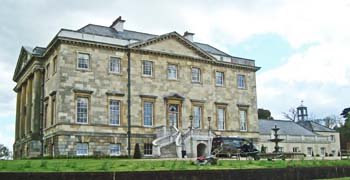
Botleys Park, the original mansion house, later the Nurses' Home, is now Botleys Mansion (above and below).
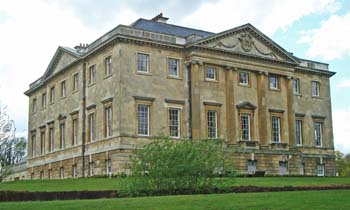
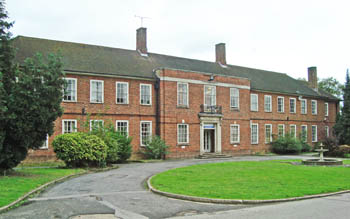
Bournewood House, the former administration building.

The entrance drive to the former Hospital, with signage for Bournewood House, Cerberus House and a Development Centre run by Surrey Prinary Care Trust and for Hayworth House and Windmill House (a 12-bedded drug and alcohol detox unit) run by Surrey and Borders Partnership NHS Foundation Trust (SABP).

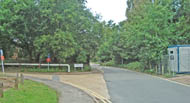
More signage along the entrance drive.

Signage to Lake House, offices for the Community Forensic Mental Health Services run by SABP.
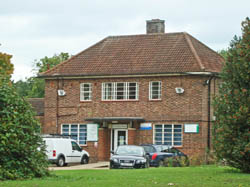
St Francis House provides psychotherapy and is also run by SABP.
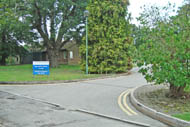
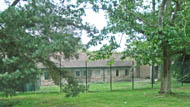
Signage to Hayworth House (left), a unit with 18 places for elderly patients with dementia, run by SAPB (right).

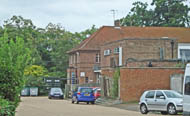
Other buildings in use on the east side.
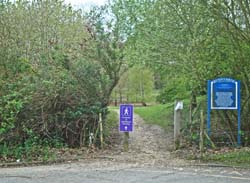
The entrance to Homewood Park, a new park established in the grounds of the former Hospital.
(Author unstated) 1939 Medical news. British Medical Journal, 1st July, 48.
Chaplin R, Peters S 2003 Executives have taken over the asylum: the fate of 71 psychiatric hospitals. Psychiatric Bulletin 27, 227-229.
http://discovery.nationalarchives.gov.uk
http://eofd.co.uk
http://hansard.millbanksystems.com
http://online.surreycc.gov.uk
http://radio.bufvc/ac/uk
http://visitwoods.org.uk
https://langdondownmuseum.org.uk
ww2.runnymede.gov.uk
www.ashfordstpeters.org.uk (1)
www.ashfordstpeters.org.uk (2)
www.britishlistedbuildings.co.uk
www.exploringsurreyspast.org.uk
www.facebook.com
www.francisfrith.com
www.geograph.org.uk (1)
www.geograph.org.uk (2)
www.geograph.org.uk (3)
www.geolocation.ws (1)
www.geolocation.ws (2)
www.nationalarchives.gov.uk (1)
www.nationalarchives.gov.uk (2)
www.surreycc.gov.uk
Return to home page